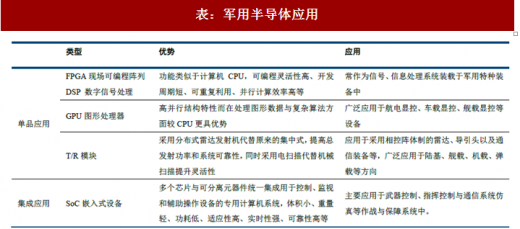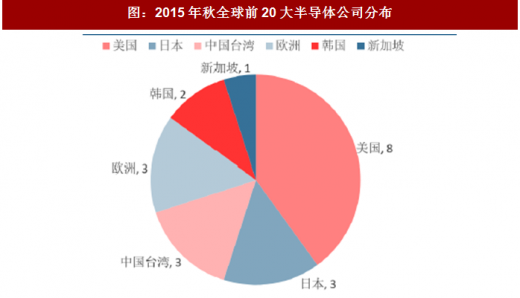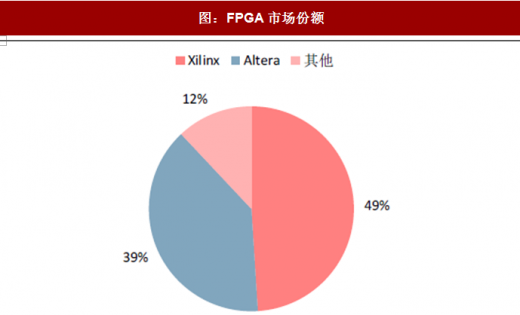ApplicationCase
RECOMMENDED
Contact us
Business representative: Mr. Chen
E-mail: myhongyuan@foxmail.com
Address: 201, building B, Huaqiang Building, No. 5065, Songbai Road, Guangming District, Shenzhen

Table: military semiconductor applications

Source: public data sorting
The United States, Japan and South Korea lead the world in semiconductor technology. According to the ranking of the world's top 20 semiconductor companies in the autumn of 2015, the top 5 semiconductor companies are Intel, Samsung Electronics, TSMC, SK Hynix and Qualcomm. Among the 20 companies, 8 are exclusive to the United States, 3 are owned by Japan, and only two are listed in South Korea, but they are all in the top five. Among Chinese enterprises, Huawei Hisilicon ranks the highest, but it still ranks outside the 20th. In the field of military semiconductor, taking FPGA as an example, its market share is almost monopolized by American companies, and Xilinx and Altera occupy 88% of the market space. In China, only Tongfang Guoxin, Jingwei Yage and other companies have production capacity, and their share is very low.
Figure: distribution of top 20 semiconductor companies in the world in autumn 2015

数据来源:公开数据整理
图:FPGA市场份额

数据来源:公开数据整理
我国半导体消费市场空间巨大但自给率低,军用半导体自主化有望带动国内相关产业发展。我国是全球半导体最大的消费市场,但产品大量来自进口。根据统计,2016 年我国进口集成电路金额达2270.7 亿美元,出口集成电路金额613.8 亿美元,贸易逆差达1656.9 亿美元,且呈现逐年增长态势。军用半导体产业军民通用性较强。军用半导体一般要求更高的可靠性和更宽的温度适应范围,但两者的共性更多,通用性较强。军用半导体自主化有望带动国内半导体相关产业发展,提升国内半导体产业技术水平与国产化率。
图:近5年我国集成电路贸易逆差

Data source: public data collation
The domestic military semiconductor industry does not have the advantages of technology and scale, and the localization rate of military semiconductor is low
There are many types of weapons and equipment, the demand for military semiconductors is different, and the quantity of each type of weapons and equipment is relatively limited and the production cycle is long. The military semiconductor industry is characterized by small batch, multi batch and slow renewal.
Small batch and multi batch: take the soc2012 chip developed by the Fifth Academy of Astronautics as an example. The chip is an anti irradiation four core parallel SOC chip, and its performance is at the world advanced level. At present, the chip is mainly used in Beidou 3 navigation satellite, and the annual demand is expected to be only one hundred chips; Obit ranks first in the domestic aerospace SOC market and is one of the leading enterprises engaged in the development and production of SPARC architecture SOC chips. The operating revenue of this part of the company in recent three years is 68.4 million, 84.36 million and 35.28 million respectively, and the scale is always small; Shenzhen Guowei electronics, a subsidiary of Ziguang Guoxin, is a key backbone unit in the national special components industry. Its self-developed core products such as microprocessor, programmable device, memory and bus are widely used in national key projects such as aviation, aerospace, electronics and shipbuilding. The company's operating revenue in recent three years is 316 million, 396 million and 510 million respectively, This revenue scale also belongs to small companies in the semiconductor field.
Slow upgrading: the production cycle of weapons and equipment is long. Type I weapons and equipment may be produced for several years or even more than ten years after finalization. The integrated circuits used need to adopt the design at finalization, which is difficult to replace. This is very different from the 1-2-year renewal cycle of consumer products. The same is true of the U.S. military. Intel closed the i960mx processor production line in 2004, which had a great impact on the F-22 fighter project. In order to deal with the problem that the continuous progress of technology leads to the intensification of shutdown and disconnection of military chips, U.S. government departments have built a 90 nm production line specially used for military by purchasing second-hand equipment and IP from commercial production lines.
Semiconductor industry is a typical capital intensive industry, which usually wins by scale, and the technology renewal cycle is short; The demand scale of military semiconductors is much smaller than that of civil semiconductors, and the upgrading is slow. Semiconductor manufacturers that only serve military industry will face higher cost amortization, resulting in higher product unit price and relatively poor performance. Under the condition of weak market competitiveness of China's semiconductor industry, China's military enterprises prefer to import products with strong performance and low price from foreign advanced semiconductor manufacturers rather than domestic products with poor performance and high price, resulting in a low localization rate of core components of weapons and equipment in China.
The localization of military semiconductors is imminent
The localization of military semiconductors is a rigid demand and urgent. The use of non autonomous and controllable chips in weapons and equipment will have a significant impact on national security. The full localization of military semiconductor chips is an urgent and rigid demand. In 2007, all Syrian radars failed before Israel attacked its nuclear facilities. In addition to the explanation of "Shute" electronic warfare, the 2008 I source: Internet e journal also reported another possibility, that is, the commercial chips in the Syrian radar were implanted with malicious circuits. It is reported that at present, the United States has the ability to inject hardware Trojans into key integrated circuits such as wireless communication chips, and even focus ion beams into finished chips.
Benefiting from our army's vigorous promotion of information construction and the increased requirements for the localization rate of key military electronic devices, China's military semiconductor market space is expected to increase significantly. The report of the 19th national congress pointed out that by 2020, China's national defense and military informatization construction should make significant progress, and the status of military semiconductors will become more and more prominent. At present, military semiconductors have become the bottleneck restricting the development of China's aerospace, new military weapons and equipment and military electronic facilities. All services and arms have strengthened the implementation of policies and schemes for imported alternative components. All complete machine factories have mandatory requirements for the localization rate of electronic components in new equipment, and there is a huge growth space for the military semiconductor market in the future.
Our government has attached great importance to the huge trade deficit of integrated circuits and the security risks brought by non autonomous controllable chips. There is a strong demand for domestic substitution of civil chips. Integrated circuit industry is a basic, leading and strategic pillar industry related to the overall situation of national economic and social development. It is the core and key to the development of information industry. Since the prism gate incident in 2013, the Chinese government has realized the importance of government data security, and more and more application scenarios will require the use of domestic chips; As early as 2010, Alibaba proposed the concept of "de IOE", removing IBM minicomputers, Oracle databases and EMC storage devices and replacing them with domestic equipment and self-developed systems. Recently, China is also increasing the "de IOE" work of government information engineering.
